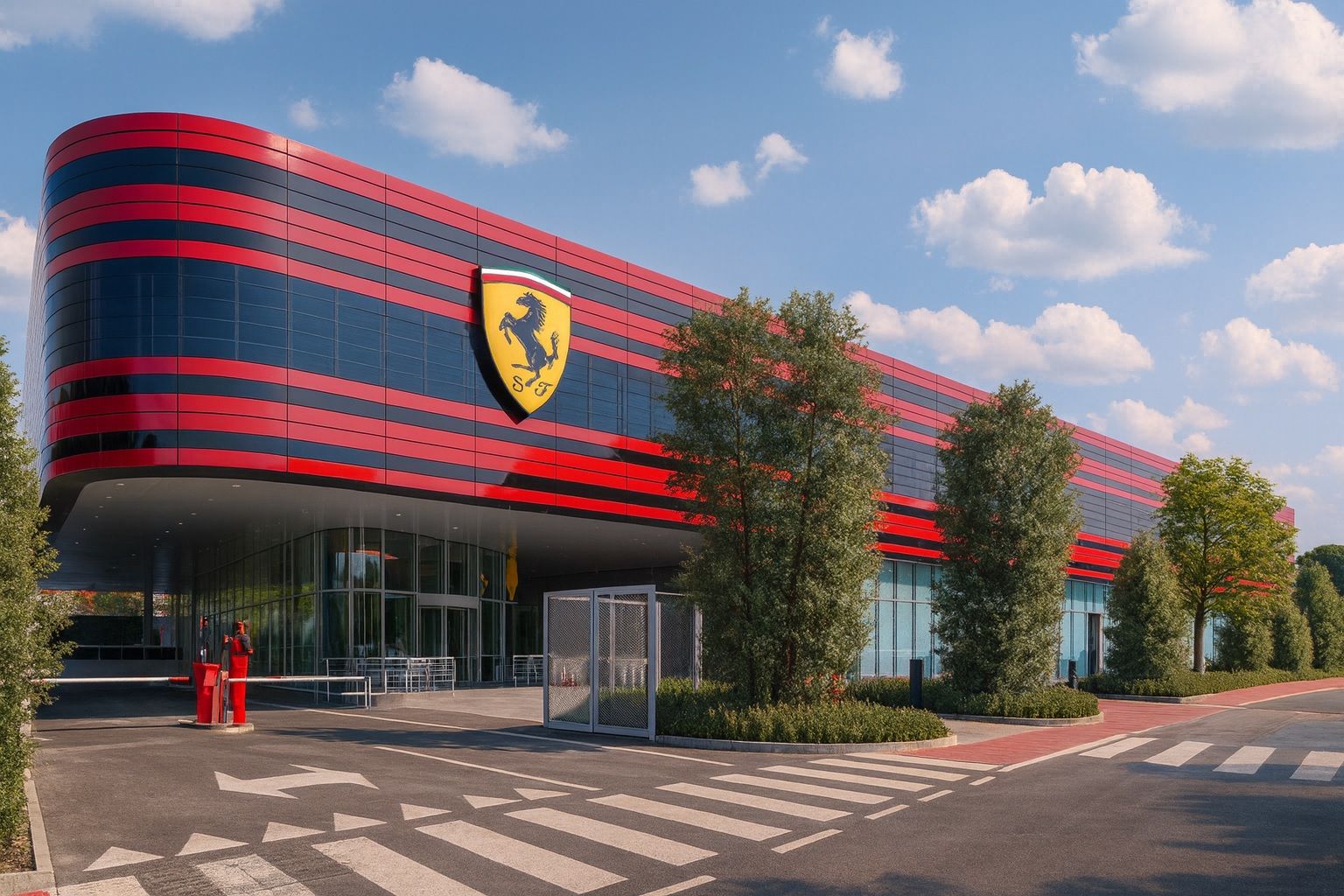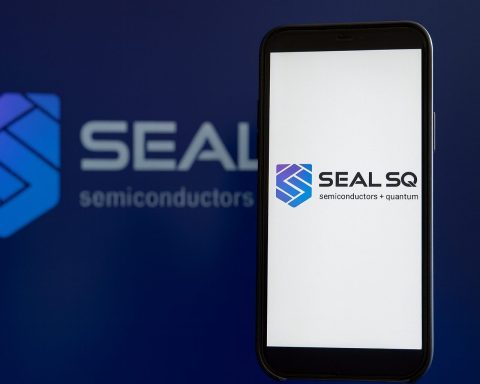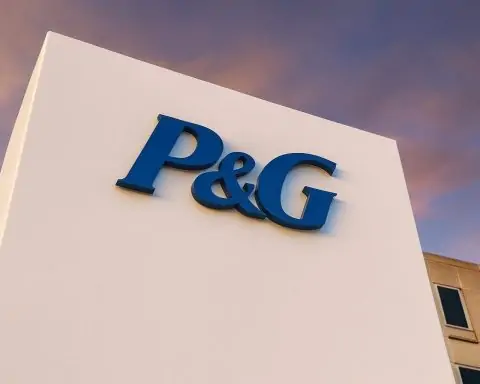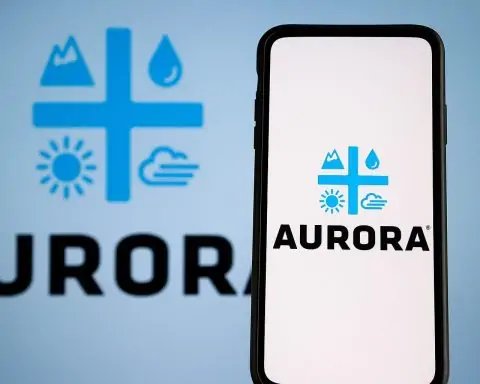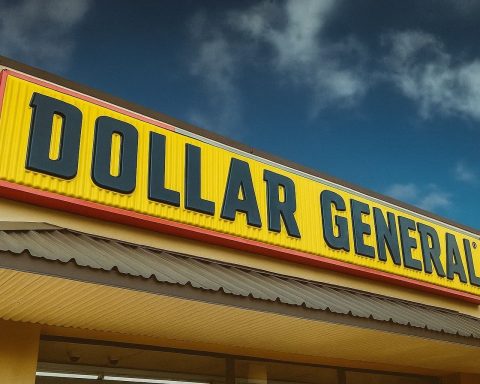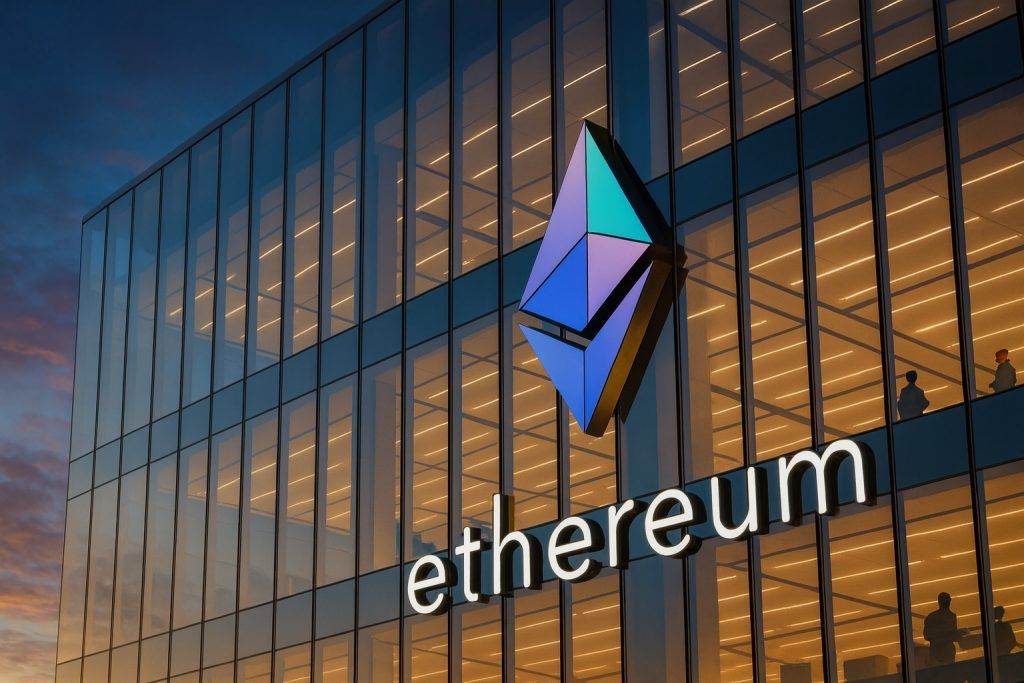- Stock Price (RACE): ~$430 per share, after a ~12% one-day plunge following Ferrari’s Capital Markets Day [1].
- Market Capitalization: Approximately $80–85 billion (around €75–80 billion) before the recent drop [2]. Ferrari’s market cap now rivals or exceeds many mass-market automakers despite its niche volumes.
- Valuation Metrics: Trailing P/E ~48x; Forward P/E ~39x [3] – a premium valuation reflecting Ferrari’s luxury branding and growth prospects. Price/Sales ~11x, EV/EBITDA ~30x [4], indicating high investor expectations.
- Dividend Yield: ~0.7% (annual dividend ~$3.40 per share) [5]. Dividend Policy: Payout set to rise from 35% to 40% of net income from FY2025 onward [6]. Ferrari announced €3.5B in dividends and a new €3.5B share buyback through 2030 as part of its capital return plan [7].
- Recent Performance: Prior to this week’s slide, the stock was +12.8% YTD [8] and about +6.5% year-over-year [9]. After the latest drop, shares are roughly flat versus 12 months ago. Over the past 5 trading days RACE fell ~15% [10], while it was approximately flat over the past month before the selloff [11].
- Ownership Structure: ~32% insider ownership (Exor N.V. ~21%, Piero Ferrari ~10%) [12] with a loyalty voting scheme giving insiders ~48% voting power [13]. ~38% of shares are held by institutions [14], with the remainder in public float. Exor (Agnelli family holding) remains the largest shareholder, and Chairman John Elkann recently reaffirmed his long-term commitment to Ferrari [15].
- Industry Position: Ferrari N.V. is a luxury sports car maker (2024 revenue €6.7B) known for exceptional margins (TTM profit margin ~23% [16]). It produces ~13,000 cars/year, focusing on ultra-high-end sports and GT cars. Key competitors span other luxury performance marques – e.g. Porsche AG (P911.DE), Lamborghini (owned by VW), Aston Martin – as well as the broader EV disruptors like Tesla in terms of investor attention.
- Market Comparison: Ferrari’s valuation is over 2× Porsche’s (~€39B) and even eclipses Volkswagen AG’s (~$55B) [17] [18], despite a fraction of the volume – underscoring the market’s view of Ferrari as a luxury brand akin to a high-growth consumer goods company rather than a traditional automaker. Tesla’s market cap (~$1.45 trillion) towers over Ferrari’s, reflecting Tesla’s mass-market EV dominance [19].
Ferrari in the Headlines: New Strategic Plan & Stock Shock
In early October 2025, Ferrari N.V. held a high-profile Capital Markets Day (investor day) in Maranello, unveiling its 2030 strategic plan and updated guidance. The event proved dramatic – Ferrari’s stock plunged nearly 12% in its worst single-day drop since the company’s 2015 IPO [20]. Shares were briefly halted after sliding by double-digits on October 9 [21], and ultimately closed the day deep in the red. This sell-off was sparked by a mix of surprising strategic pivots and cautious long-term targets that rattled some investors, despite Ferrari simultaneously raising near-term forecasts.
Key news from the event: Ferrari raised its 2025 outlook but halved its EV goal for 2030, signaling a more conservative electrification strategy. The company formally revealed its first fully electric model, the Ferrari “Elettrica,” slated for late 2026 delivery [22] [23]. At the same time, management announced that by 2030 only 20% of Ferrari’s sales will be fully electric, down sharply from a previous 40% target [24] [25]. This reduced EV ambition – essentially doubling down on combustion engines and hybrids – took analysts by surprise [26]. The stock initially dropped as much as ~13% on the news, as investors feared Ferrari might be slow-walking electrification at a time when EV hype is high [27].
Ferrari’s CEO Benedetto Vigna sought to reassure stakeholders that the marque’s strategy is deliberate and “technology-neutral.” He emphasized that Ferrari will balance internal combustion, hybrid, and electric powertrains to suit its brand and clients – targeting a 40% ICE / 40% hybrid / 20% EV mix by 2030 [28]. Vigna highlighted Ferrari’s heritage and unique market positioning, stating “Ferrari’s unique positioning is born from the intersection of heritage, technology, and racing” and that the company’s vision for the decade will be “realized thanks to the commitment of our people and the trust of all stakeholders.” [29]. Nonetheless, the tone of long-term guidance was cautious. For 2030, management projects ~€9B revenue (only ~5% CAGR) and an EBITDA margin of ~40% [30] [31] – solid but not dramatically above current levels. This prudent outlook, combined with scaling back EV plans, left some investors underwhelmed.
Adding context, Ferrari’s stock had been on a tear in recent years, hitting all-time highs above $500 just before the event. Its premium valuation implies high expectations for growth and innovation. Thus, any hint that Ferrari will grow only modestly or lag in EVs can trigger sharp corrections. Indeed, some analysts noted concern that Ferrari might struggle to maintain its rapid profit momentum without a more aggressive EV strategy or volume expansion. The stock’s steep drop reflects a recalibration of those expectations – essentially, the market “hit the brakes” on Ferrari’s lofty valuation until seeing proof that the Prancing Horse can execute its plan.
Recent Stock Performance: A Volatile Ride
Despite this week’s turmoil, Ferrari’s longer-term stock performance showcases its resilience and investor faith in the brand. Prior to the Capital Markets Day, RACE had climbed roughly +13% year-to-date and about +6–7% over the past 12 months [32] [33], outpacing many auto industry peers. In fact, as of early October, the stock was near record highs, reflecting strong earnings and optimism around Ferrari’s strategy. The company’s ability to consistently sell out its production and expand margins has made it a market darling in the consumer discretionary space.
However, volatility has ticked up. In the past week, Ferrari shares sank roughly 14–15% [34] due to the post-investor-day plunge. Over the last month, excluding this drop, the stock was approximately flat [35] – indicating that most of the recent decline came in just a couple of sessions. Earlier in the summer, Ferrari also experienced a sharp sell-off (~12% in one day on July 31, 2025) after a cautious H2 outlook with its Q2 results, marking what was then its worst drop since 2016. That mid-year stumble foreshadowed the market’s jitters about rich valuations: any hint of softer growth has been punishing for Ferrari’s stock. Still, zooming out, Ferrari has delivered positive returns over multi-year periods – for instance, the 3-year performance is +157% [36], handily beating broad market indices. Long-term shareholders have been rewarded as Ferrari steadily grew earnings, expanded its model range, and proved its brand power.
In summary, Ferrari’s stock price trajectory has been upward over the years, but with bursts of volatility around key announcements. The run-up into 2025 (driven by excitement over new models, strong pricing, and luxury demand) met reality this week with a valuation “speed bump.” The coming weeks will tell if the stock stabilizes around current levels or continues to skid. Notably, some bargain hunters and long-term bulls may view the double-digit dip as a buying opportunity, given Ferrari’s fundamentals – indeed, after the initial rout, the shares trimmed losses as management’s guidance sank in [37]. Analyst sentiment remains largely positive (as discussed below), which could help put a floor under the price.
Financials & Forecasts: Slowing but Steady Growth
Ferrari’s financial performance remains robust, though its guidance suggests moderate growth ahead rather than breakneck expansion. The company slightly upped its 2025 targets, now aiming for ≥€7.1 billion revenue in 2025 (vs €6.7B in 2024) [38] [39], and adjusted EBITDA ≥€2.72B (~38% margin). This effectively pulls forward goals that were previously set for 2026 [40], implying confidence in near-term demand and pricing. Diluted EPS for 2025 is projected around €8.80 [41], up from roughly €6.00 in 2022 – a healthy growth trajectory. Additionally, Ferrari’s order book remains extremely strong: the CFO noted orders stretch into 2027 for some models [42], reflecting a multiyear backlog that provides revenue visibility.
Looking out to 2030, Ferrari’s new targets include ~€9B in net revenue (about +5% CAGR from 2024) and ≥€3.6B EBITDA (40% margin) [43] [44]. Expected EBIT is ≥€2.75B (30% margin) by 2030 [45]. These figures confirm Ferrari plans to grow at a measured pace, prioritizing profitability and brand exclusivity over volume. Notably, cumulative industrial free cash flow of ~€8B is anticipated over 2026–2030 [46], enabling generous shareholder returns (dividends + buybacks) as mentioned. Ferrari’s capital expenditure in that period (~€4.7B) will be directed mainly to developing the “next generation” sports cars and drivetrains [47].
Analyst forecasts before the Capital Markets Day were generally upbeat, but some have been tempered by the new guidance. Consensus had been calling for high-single-digit annual revenue growth and EPS growth in the mid-teens, banking on pricing power and new model introductions. Ferrari’s own targets now align more conservatively with those ranges. Financial experts remain divided on whether Ferrari is sandbagging (setting easily beatable targets) or signaling an inevitable deceleration.
- Bullish take: Firms like RBC Capital reiterated their Buy rating even after the EV target cut [48]. Bulls argue Ferrari’s brand strength and pricing will allow it to beat these conservative goals. They point out that Ferrari has a track record of underpromising and overdelivering; for example, Ferrari regularly posts EBITDA margins above guidance and has been raising prices with minimal impact on waitlists. Some analysts highlight new profit drivers like the Purosangue SUV and limited-edition hypercars, which could lift margins and revenue more than planned. Weiss Ratings recently affirmed a Buy rating, citing confidence in Ferrari’s strategy despite the EV skeptics [49]. The average target price among analysts sits around $540 (about 20% above pre-drop levels) [50], reflecting long-term optimism.
- Bearish take: More cautious voices, including some skeptical analysts and financial press, question if Ferrari can maintain its lofty 50x earnings valuation without faster growth. With unit sales capped to preserve exclusivity and EV roll-out slower, Ferrari’s mid-decade growth could appear modest compared to high-flying luxury EV peers. Some warn that the company’s profit momentum may wane after 2025’s bump, especially if global economic conditions soften. Ferrari’s EBITDA margin (~38–40%) is already near the ceiling of what a carmaker can achieve, they argue, so margin expansion beyond 40% will be challenging. Analysts are skeptical whether Ferrari’s strategy provides enough new revenue streams (like SUVs, EVs, or brand licensing) to justify its premium valuation if growth stays ~5% annually [51]. In short, the bears see an excellent company, but perhaps an overvalued stock if its growth behaves more like a stable luxury goods firm than a tech-like disrupter.
Worth noting: Ferrari’s Q2 2025 earnings (reported Jul 2025) beat expectations on strong demand and mix (helped by high-end models), but management at the time gave a “softer” outlook for H2 2025 [52], citing FX headwinds and phasing of shipments. This cautious guidance in July contributed to that summer stock drop. By Q3 results (due in a few weeks), investors will be keen to see if Ferrari upgrades its full-year outlook again or if any macro softness is appearing in orders. Also on the radar is how foreign exchange (a strong US dollar) and input costs are affecting Ferrari’s margins – so far, the company has deftly protected profitability via pricing and cost control.
Racing Past Rivals: Ferrari vs. Porsche, Tesla, Lamborghini
Ferrari’s stock and strategy invite constant comparisons with both legacy luxury peers and new-age EV leaders:
- Porsche AG (P911.DE): The iconic maker of the 911 sports car went public in late 2022 and currently has a market cap around €38–39B [53] – less than half of Ferrari’s valuation, despite Porsche selling ~300,000 cars annually (over 20× Ferrari’s volume). Porsche’s P/E (~15x) and profit margins (~10% net) are far lower than Ferrari’s, reflecting its positioning as a higher-volume premium brand. In 2025, Porsche’s stock has struggled (down ~35% year-on-year) [54] due to broader auto sector concerns and perhaps the overhang of being tied to Volkswagen. Ferrari’s outsized valuation premium to Porsche underscores how investors see Ferrari as a more exclusive luxury goods business with scarcity value, whereas Porsche (despite its luxury cachet) competes more directly with other automakers and EV entrants. Notably, Porsche is aggressively expanding its EV lineup – the Taycan (electric sports sedan) already makes up ~15% of its sales, and a fully electric Macan and 718 sports car are in the works. Porsche is also innovating in EV tech: for example, it’s introducing a wireless 11 kW charging pad for the upcoming Cayenne EV, offering convenient cable-free home charging at ~90% efficiency (comparable to wired chargers) [55]. This contrasts with Ferrari’s slower EV roll-out. However, Porsche must balance EV investment with maintaining its performance heritage (hence the new 911 Turbo S Hybrid launched in 2025, bridging combustion and electric for its signature model) [56]. Bottom line: Ferrari and Porsche both leverage storied brands, but Ferrari targets a far more rarefied market segment. Ferrari’s limited production and higher margins have made it the most valuable carmaker per unit sold in the world, whereas Porsche, while highly profitable, is valued more like a traditional automaker. Investors will be watching how Porsche’s deeper dive into EVs (including possible 11 kW wireless charging tech and a forthcoming Cayenne EV launch by late 2025 [57] [58]) plays out versus Ferrari’s tempered EV strategy.
- Tesla (TSLA): While not a direct product competitor (Tesla sells mass-market EVs and some premium models, but no sports supercars yet), Tesla is Ferrari’s foil in the stock market. Tesla’s recent valuation – around $1.45 trillion as of Oct 2025 [59] – is roughly 17 times Ferrari’s, making Tesla the world’s most valuable automaker by far. Tesla’s meteoric rise (its stock +92% in the past year [60]) has put pressure on all automakers to articulate an EV strategy and capture some of the market’s “tech-like” growth premium. In many ways, Ferrari has benefitted from the EV halo without actually delivering EVs yet – its P/E near 50 has been partially supported by the notion that Ferrari can navigate the electric transition while maintaining its luxury margins. However, by scaling back its EV targets, Ferrari risks ceding some of the narrative to Tesla and other EV-focused players. For instance, Tesla’s Roadster (if it ever launches) and high-performance Plaid models already challenge combustion supercars in acceleration; and as EV technology advances, some wealthy buyers may start cross-shopping high-end Teslas or Lucid Airs with traditional exotics. That said, Ferrari’s clientele and brand aura are quite insulated from Tesla’s domain – a loyal Ferrarista seeking a visceral V12 or a track-bred machine is unlikely to jump ship to a Tesla. Tesla’s impact is more indirect: it has changed the investor expectations for growth and innovation in the auto industry. By 2025, Tesla also enjoys scale advantages and is moving down-market, whereas Ferrari explicitly caps volume to protect exclusivity. Comparative performance: Ferrari’s stock has risen strongly over the past 5 years (about +160% [61]), but Tesla’s has grown exponentially in that time. In short, Ferrari and Tesla occupy opposite ends of the automotive spectrum – ultra-luxury artisan vs. disruptive tech giant – yet Ferrari must convince investors it won’t be left behind in an EV-dominated future that Tesla is accelerating.
- Lamborghini (Volkswagen Group) & Aston Martin, etc.: Among Ferrari’s closest like-for-like rivals are other exotic sports car makers. Lamborghini, owned by Audi (VW), is privately held within the conglomerate, so there’s no direct stock to compare. However, Lamborghini’s strategy provides an interesting mirror to Ferrari’s. Lamborghini’s CEO Stephan Winkelmann has similarly voiced caution on EVs: the company recently delayed its first EV (the “Lanzador” concept) to 2029 and is even considering making it a plug-in hybrid instead of full electric, due to “softening demand for high-end electric cars” in its segment [62] [63]. Lamborghini also decided that the next-gen Urus SUV will not be all-electric but a plug-in hybrid, to wait until customers are ready for a pure EV [64] [65]. This echoes Ferrari’s stance – both brands see their wealthy buyers craving emotion, sound, and heritage, which current EV technology can struggle to provide. Lamborghini plans to “keep [combustion engines] as long as possible”, potentially via synthetic e-fuels to meet regulations [66]. Ferrari, too, is pursuing e-fuel opportunities (benefiting from EU’s allowance of carbon-neutral fuel for ICE beyond 2035) to extend the life of its beloved V8 and V12 engines. In terms of market, Lamborghini has been booming within VW – its sales hit ~9,000 units in 2024 (fueled by the Urus SUV’s popularity) and profitability improved, but it still likely trails Ferrari in margin. If Lamborghini were spun off, analysts suggest it would fetch a lower multiple than Ferrari, given Ferrari’s stronger brand loyalty and F1/racing pedigree. Aston Martin Lagonda, another storied name, has struggled financially and is much smaller (its market cap <$3B and shares have lagged), underscoring how difficult it is to replicate Ferrari’s business model. McLaren remains private and has faced cash crunches. Conclusion on peers: Ferrari stands virtually alone as a pure-play supercar stock with both growth and profitability – its competitors are either embedded in larger companies (thus not valued on their own merits) or have not achieved the same financial success. This unique status contributes to Ferrari’s premium valuation, but also means investors have few direct benchmarks – making Ferrari’s strategic execution all the more critical for justifying its market cap.
Innovation, EV Strategy & Luxury Positioning
A central question for Ferrari (and its investors) is how the company will innovate for the future while preserving the elements that make a Ferrari a Ferrari. The 2025 Capital Markets Day shed considerable light on this:
- Electric Vehicles: Ferrari’s unveiling of the Elettrica prototype confirms that an all-electric Ferrari is coming in 2026 [67]. The company teased impressive performance specs – four motors delivering over 1,000 horsepower, 0–100 km/h in 2.5 seconds, and a top speed of 310 km/h [68]. Clearly, Ferrari intends for its EV to be a true supercar in performance. Moreover, Ferrari is leveraging its engineering know-how: the Elettrica will use a battery pack entirely designed and assembled in-house, with two bespoke electric axles [69]. Over 60 new patents are incorporated, and interestingly, the chassis is 75% recycled aluminum, cutting weight and reducing CO₂ by 6.7 tons per car [70]. These facts demonstrate Ferrari’s commitment to making the EV a showcase of innovation (not just outsourcing EV tech). However, Ferrari is intentionally limiting EV exposure – targeting only 20% of its lineup as EV by 2030 [71]. Management cited the need for a “balanced” transition; essentially, Ferrari believes hybrid technology (derived from its Formula 1 experience) and highly efficient ICEs (possibly running on e-fuels) will remain critical to delivering the driving emotion its clients expect. This strategy contrasts with many automakers announcing majority or full EV lineups by 2030. Ferrari is effectively saying: our customers don’t yet fully embrace electric for supercars, so neither will we – not until the technology and demand are truly ready. This cautious approach might protect Ferrari’s brand in the short term (no compromise on the famed engine sound or driving feel for most models), but it’s also a gamble – if EV adoption even in the high-end segment accelerates faster (due to performance advantages or regulations), Ferrari could be caught behind. For now, though, premium EVs have seen mixed demand, and Ferrari appears to be reading its clientele correctly (Lamborghini’s similar hesitance supports this view [72] [73]).
- Hybrid Tech and ICE: Ferrari has been a pioneer in hybrid supercars – models like the SF90 Stradale and 296 GTB (both plug-in hybrids) deliver staggering performance and have been well-received [74]. By 2030, Ferrari expects 40% of sales to be hybrids [75], making electrified powertrains (to some degree) the majority of its lineup. This suggests every all-new Ferrari model launching will likely have at least a hybrid option. Ferrari’s hybrid systems draw heavily from F1 KERS technology, giving it a performance edge. Meanwhile, for pure combustion, Ferrari intends to keep making highly emotional ICE cars (40% of 2030 mix) [76] – think V12 special editions and track cars – as long as it’s feasible under emissions laws. The company’s commitment to sustainability is notable: Ferrari pledged to reduce direct (Scope 1 & 2) emissions 90% by 2030 vs 2021 [77], which implies its factories and processes will be nearly carbon-neutral (likely by using renewable energy and purchasing offsets). Reducing Scope 3 (customer use) emissions is trickier, but Ferrari’s mix shift to hybrids/EVs and potential use of e-fuels in ICE models will contribute. This focus on sustainability aims to bolster Ferrari’s ESG profile, which is increasingly important for institutional investors. In the luxury auto segment, Ferrari wants to be seen as forward-thinking on environment without diluting its brand legacy.
- Innovation & New Models: Ferrari plans to accelerate its product cadence – introducing 4 new models per year from 2026 to 2030 [78]. This is a significant increase that will refresh the lineup faster than before. We can expect a mix of model types: sports cars, GTs, one-offs, Icona series (retro-inspired limited cars), maybe even a second SUV or new segments. Importantly, Ferrari’s strategy is not to sell many more cars, but to sell more different cars to more diverse ultra-wealthy clients. The company expects its active client base to grow ~20% to ~90,000 by 2030 [79]. This suggests Ferrari will attract new customers (e.g., with models like the Purosangue SUV or future EVs appealing to those who haven’t owned a Ferrari before) while keeping production volumes relatively constrained per model. Ferrari’s Tailor Made customization program is expanding (new centers in Tokyo and LA by 2027) [80] to further enhance the bespoke appeal – an innovation in customer experience rather than technology, but crucial for a luxury brand. On the technical side, Ferrari will continue to pour R&D into motorsport-derived innovations. Its dominance in endurance racing (winning Le Mans in 2023, 2024, 2025) adds to its engineering cred. The Le Mans Hypercar victory streak underscores Ferrari’s ability to translate racing tech to road cars – expect synergies in aerodynamics, hybrid systems, and lightweight materials from racing programs to future models. Ferrari’s ongoing participation in F1 (despite a tough 2025 season on track) also fuels advances in engine efficiency and hybrid tech, aligning with its product roadmap.
- Luxury Brand Positioning: Ferrari is often described not just as a carmaker but as a luxury brand akin to Hermès or Louis Vuitton – producing scarce, coveted products for a global elite clientele. Ferrari’s approach to innovation is thus filtered through a luxury lens: will this enhance the brand’s allure and exclusivity? The company has carefully managed its brand equity – limiting annual production growth to preserve rarity, and engaging customers with lifestyle experiences (Ferrari hosts exclusive events, track days, has theme parks, etc.). The Prancing Horse logo adorns merchandise from apparel to entertainment parks, providing high-margin licensing income (though car sales still make up ~86% of revenue [81]). In 2025, Ferrari is pushing into new lifestyle ventures (recent fashion collaborations, esports, etc.), but does so selectively to avoid brand dilution. The Capital Markets Day reinforced that Ferrari sees itself leading the “luxury car segment” and managing the tech transition in a “balanced” way [82] – code for not rushing to follow trends but doing what fits the brand. This strategy appears to be working, as demand outstrips supply consistently and Ferrari has one of the highest margins in the industry. However, it requires walking a fine line: embrace innovation enough to stay relevant (e.g. rollout EVs, advanced connectivity, autonomous features to an extent) but not so much that Ferrari loses its visceral, emotional appeal. As CEO Vigna put it, Ferrari’s ethos is still guided by its founder’s spirit and racing soul, and that will guide ambitions this decade [83].
Macroeconomic & ESG Factors
Even the world’s most elite brands are not entirely immune to macroeconomic currents. Several broader factors could impact Ferrari N.V. in 2025 and beyond:
- Economic Climate & Demand Resilience: Thus far, Ferrari’s customer demand has proven remarkably resilient to economic swings. Its clients are ultra-high-net-worth individuals for whom a $300k+ supercar is discretionary but also passionately desired. Historical evidence shows Ferrari can even grow during recessions – for example, during some past downturns, waiting lists remained lengthy (sometimes wealth consolidates at the top in tough times). That said, the current environment of rising interest rates and potential slowing global growth bears watching. Higher rates have minimal direct effect on Ferrari’s clients (many buy in cash), but could impact the financing cost for dealerships or for aspirational buyers of entry models. A sharper economic downturn in the U.S., Europe, or China could psychologically temper spending on luxury toys. So far, nothing of that sort is evident – Ferrari’s 2025 guidance raise suggests strong demand. The diversified geographic mix (28% US, 8% China, ~50% EMEA, rest Asia/ROW) provides some cushion; weakness in one region tends to be offset by strength elsewhere. Currency fluctuations are a macro factor: Ferrari reports in Euros but sells globally, and a strong dollar (as seen in 2024–25) actually boosts Ferrari’s earnings in euro terms (since a lot of revenue is USD). Conversely, if the euro surges, it could weigh on results. Ferrari actively hedges currencies to manage this. Tariffs or trade tensions (e.g., US-China) haven’t significantly touched Ferrari, since volumes are small and often find exemptions, but remain a tail risk. Overall, Ferrari’s business has a defensive quality within consumer cyclicals – its backlog into 2027 [84] implies it would take a prolonged severe recession to materially dent its near-term sales.
- ESG and Regulatory Pressure: As a maker of high-performance combustion vehicles, Ferrari sits in regulators’ crosshairs regarding emissions. The EU’s mandate for zero-emission new car sales by 2035 does include an exception for companies like Ferrari if they use carbon-neutral e-fuels. Ferrari is likely to leverage this; it joined other exotic car makers lobbying for e-fuel allowances. The company’s public goal to slash factory emissions 90% and reduce supply chain impact [85] is partly to bolster its ESG credentials. Many institutional investors now have ESG criteria, and Ferrari’s score in such rankings historically was middling (due to product emissions and a lack of disclosure). However, Ferrari has improved transparency, publishes sustainability reports, and highlights steps like installing solar panels in Maranello and sourcing renewables for energy. Additionally, Ferrari’s move into hybrids and EVs, albeit gradual, is a response to both regulatory requirements and the need to appeal to a new generation of environmentally conscious luxury buyers. On the social and governance side of ESG: Ferrari generally scores well on governance (it’s a Dutch NV with an independent board and no dual-class stock in economic terms, only loyalty voting which is relatively common in Italy). It has had some scrutiny on diversity and inclusion, as its industry is male-dominated, but the company has started initiatives to recruit more diverse talent and has featured female drivers in its racing programs (e.g., Iron Dames in endurance racing). Summing up ESG: Ferrari is framing itself as a responsible steward of a legendary brand, trying to reconcile the thrill of roaring V12 engines with the demands of a low-carbon future. The 20% EV target and 40% hybrid by 2030 [86] illustrates a balanced approach – enough electrification to meet likely regulations and cut fleet emissions, but not so much as to alienate traditional customers in the 2020s. If executed, Ferrari could emerge by 2030 with significantly lower emissions per car while still delivering the emotion its brand promises – a combination that would satisfy ESG-oriented funds and Ferrari’s fan base alike.
- Institutional Ownership & Investor Base: As mentioned, about 38% of Ferrari’s float is institutionally owned [87]. Major holders include large global asset managers and index funds (Ferrari is in the S&P Europe 350 and other indices). In addition, Exor N.V. (the Agnelli family investment company) holds ~22% and Piero Ferrari ~10%, and they have a shareholders’ agreement [88], providing stability in governance. This stable core ownership likely reassures other investors; Ferrari isn’t at risk of a takeover and its management can plan long-term. That said, institutional investors can be fickle in the short term – if Ferrari’s narrative doesn’t align with growth or ESG trends, some funds might rotate out. For example, a growth fund might trim Ferrari if it believes earnings growth will slow; an ESG fund might avoid Ferrari if it deems the pace of electrification too slow. Conversely, value-oriented and quality-focused investors often love Ferrari for its strong cash flows, brand moat, and pricing power – characteristics that can justify a premium valuation. The company’s commitment to increasing dividends and buybacks [89] could also broaden its appeal to dividend growth investors (though the yield remains low). Notably, Vontobel, a Swiss investment firm, was reported to have recently boosted its stake [90], indicating some institutions saw the post-drop price as attractive. Ferrari’s investor base thus seems to be a mix of long-term believers in the brand and more momentum-driven players; the latter likely contributed to the sharp sell-off and could also fuel a rebound if sentiment improves.
Shareholder Returns: Dividends and Buybacks
Ferrari may be a growth company, but it hasn’t shied away from rewarding shareholders directly. The firm initiated a dividend shortly after its IPO and has grown it consistently. In 2025, the annual dividend was €1.810 per share (paid in April) [91], roughly a 0.7% yield. At the Capital Markets Day, Ferrari announced a plan for €7 billion in shareholder distributions from 2026-2030 [92]. Half of this (€3.5B) is earmarked for a new stock buyback program starting in 2026, and the other €3.5B for dividends over that period [93]. They also will raise the payout ratio to 40% of adjusted net income from 35%, beginning with the 2025 results dividend [94]. This implies dividends will grow faster than earnings in the near term.
For context, Ferrari’s dividend growth has been strong (dividend per share up ~26% annually over the past 3-5 years) [95], reflecting both profit growth and deliberate increases in payout. Even so, the yield remains modest – Ferrari prioritizes using excess cash for growth (R&D, capex on new models/facilities) and now also buybacks. The share repurchase plan is notable: Ferrari already does small, regular buybacks (it holds some treasury shares [96], often used for employee grants or to offset dilution). A larger buyback could signal management believes the stock is a good value and wants to return cash efficiently. It also could be intended to neutralize the loyalty voting effect over time by reducing public float (thus relatively boosting Exor/Piero votes further). Either way, this approach is shareholder-friendly and somewhat uncommon in the auto industry, where many firms hoard cash for cyclical downturns. Ferrari’s confidence in allocating €7B to shareholders suggests it expects robust cash generation ahead (which aligns with the ~€8B free cash flow forecast for 2026-30 [97]).
From a dividend policy standpoint, Ferrari appears to be positioning itself like a stable luxury company – akin to an LVMH which regularly raises dividends – rather than a volatile automaker that might suspend payouts in a bad year. As long as Ferrari’s order books remain full and margins high, these payouts should be easily covered. Investors seeking income won’t find a high yield here, but they do get the reassurance of dividends that rise steadily (the dividend CAGR has been strong [98]) and the potential for buybacks to boost EPS. It’s a sign that Ferrari has moved past its heavy investment phase (the new factory wing for EVs, etc. is already built [99]) and is now a cash-generative business capable of both investing in innovation and returning excess to shareholders.
Long-Term Outlook and Growth Drivers
Looking beyond the current gyrations, Ferrari’s long-term growth story remains compelling, albeit more moderate and controlled than the market hype might have assumed. The company essentially operates at the intersection of ultra-luxury and performance technology, a niche with high barriers to entry. Key factors that will shape Ferrari’s future include:
- Product Pipeline: The aggressive plan for four new models per year means Ferrari will have ~20 new models by 2030. These will likely cover all facets of the range: from successors to the 812 Superfast and F8 Tributo, to special series (Icona or XX cars), to possibly new categories. Rumors persist of a second SUV/crossover by late decade to complement the Purosangue – something to attract those who want a practical Ferrari. Also, Ferrari could explore an all-electric GT or sedan after the Elettrica sports car, to broaden its electric appeal (the CEO has hinted a “second EV” is possible within the 2030 plan [100]). Each new model presents an opportunity to tap new customers or entice collectors into additional purchases. Historically, Ferrari’s limited editions (like the Daytona SP3 or LaFerrari) sell out immediately and appreciate in value, fostering an investment-like appeal. If Ferrari continues this strategy – introducing occasional halo models with million-dollar price tags – it can boost profits and brand prestige without large volume increases.
- Market Expansion: Ferrari is targeting ~90k active clients by 2030 [101], up ~20%. Growth will likely come from emerging markets and underserved regions. China is a big focus; while China/Hong Kong was only ~8% of Ferrari sales, it’s the largest global market for many luxury goods. Ferrari has tread carefully in China (historically limiting allocations to avoid grey-market flipping), but the wealth boom there means China could absorb more if Ferrari allows. The Middle East is another growth area, as is broader Asia (places like South Korea, Southeast Asia have rising super-rich populations). Ferrari has been opening new dealerships and “Ferrari Atelier” customization showrooms in such locales. Also, Ferrari is cultivating the next generation of buyers – for example, through its Ferrari Driving Experience programs and capturing younger enthusiasts via esports and social media. As wealthy Millennials and Gen-Z come of age, Ferrari wants to ensure its brand remains as aspirational as it was for older generations. Part of that means positioning itself on the cutting edge of technology (hence the high-tech aura around the Elettrica EV and things like integrating advanced infotainment, connectivity, maybe even autonomous modes for GT comfort).
- Competitive Landscape Changes: While Ferrari currently stands unrivaled in its brand domain, competition is always looming. Porsche will continue climbing upmarket (the 911 GT2 RS, etc., encroach on Ferrari’s performance territory albeit at lower price points). McLaren is financially weaker but still produces cars that compete head-to-head on track performance. Lamborghini is enjoying record popularity and will release new hybrids (the Revuelto just launched as a 1,000hp V12 hybrid). Moreover, new players like Rimac (Croatian EV hypercar maker) and possibly Lotus (with its Evija EV hypercar) are angling for relevance in the electric supercar space. If battery tech improves (lighter, more energy dense), electric hypercars could genuinely threaten the dominance of ICE in ultra-performance by late 2020s. Ferrari will need to harness its engineering might to ensure its EVs are the ones to beat in that arena. On the flip side, Ferrari’s decades of racing experience and vehicle dynamics know-how is a moat that new EV entrants lack – raw acceleration is easy with EVs, but making a car that handles like a Ferrari on a circuit remains an art. The company’s challenge is to translate that artistry into the EV/hybrid era better than anyone else.
- Margins and Pricing: A core part of Ferrari’s bull case is that it can continue to raise prices above inflation and customers will pay. So far this has held true; the average selling price of a Ferrari has crept upwards as more customers opt for personalization and as the model mix shifts to higher-end variants. The Purosangue, despite being a four-seater, starts around $400k and had such overwhelming demand that Ferrari had to stop taking orders temporarily to maintain exclusivity. Ferrari’s wealthy client base is somewhat price-insensitive – raising a model’s price 5-10% usually doesn’t dent the queue. The risk would be if Ferrari pushes too far, or if a competitor offers something comparable for much less, but the brand loyalty Ferrari commands is akin to luxury fashion houses. Also, as Ferrari introduces hybrids/EVs, there could be opportunities to charge a premium for those technologies (given their performance benefits and novelty). The margin outlook into 2030 is around 40% EBITDA [102], but some optimists think Ferrari could exceed that if, say, its limited-edition mix is higher or if it achieves efficiencies in EV manufacturing. Conversely, EVs initially might carry lower margins (due to high battery costs) which Ferrari will have to offset via pricing or cost innovation. Ferrari’s pledge to keep a strong product mix and innovation driving profit [103] signals they are aware of this and plan accordingly.
- Brand Extensions: Ferrari has opportunities beyond cars to drive growth. While cars will remain ~85%+ of revenue, the company could expand its branding and experiences – e.g., more Ferrari-themed attractions (like the existing Ferrari World Abu Dhabi), exclusive clubs or resorts for owners, or even digital products (NFTs of classic Ferraris were explored at one point). These are ancillary, but in a world of experiential luxury, Ferrari could monetize the passion of its fan base in new ways that also reinforce loyalty (for instance, the Ferrari Classiche program that certifies and restores classic Ferraris binds multi-generational owners to Maranello). None of these will move the needle like selling cars, but they contribute to an ecosystem that keeps Ferrari at the pinnacle of desirability, which ultimately supports pricing power and sales.
In conclusion, Ferrari’s roadmap suggests steady, sustainable growth rather than explosive leaps. The company is effectively telling investors: we will expand earnings and dividends steadily, keep our brand ultra-coveted, and transition to new tech on our own terms. This strategy might not satisfy those looking for hyper-growth or a bold EV disruption story, but it plays to Ferrari’s strengths – exclusivity, legacy, and excellence. As of late 2025, the stock’s pullback indicates some growing pains in convincing the market of this approach. Yet, Ferrari’s fundamentals – from an order backlog into 2027 [104] to a history of execution – provide confidence that the Prancing Horse can continue to gallop ahead of the pack in the long run, even if there are a few pit stops along the way.
Sources: Ferrari Capital Markets Day release [105] [106]; MarketScreener/Alliance News summary [107] [108]; Reuters coverage [109] [110]; Finviz and Yahoo Finance data [111] [112]; Ferrari Corporate filings [113] [114]; Bloomberg/Motor1 industry reports [115] [116]; ts2.tech analysis [117]; Analyst commentary (RBC, Barron’s, etc.) [118] [119]; Competitor financials from TradingEconomics and Yahoo Finance [120] [121]; Tesla market cap data [122]; Ferrari 2024 revenue and geographic breakdown [123]; Historical performance and valuation metrics from Finviz [124] [125]; Ferrari CEO and management quotes [126].
References
1. www.reuters.com, 2. finviz.com, 3. finviz.com, 4. finviz.com, 5. finviz.com, 6. www.marketscreener.com, 7. www.marketscreener.com, 8. finviz.com, 9. finviz.com, 10. www.marketscreener.com, 11. finviz.com, 12. www.ferrari.com, 13. www.ferrari.com, 14. finviz.com, 15. www.marketscreener.com, 16. finviz.com, 17. macrotrends.net, 18. en.wikipedia.org, 19. stockanalysis.com, 20. www.reuters.com, 21. www.reuters.com, 22. www.bloomberg.com, 23. www.marketscreener.com, 24. jingdaily.com, 25. www.marketscreener.com, 26. jingdaily.com, 27. www.reuters.com, 28. www.marketscreener.com, 29. www.marketscreener.com, 30. www.marketscreener.com, 31. www.marketscreener.com, 32. finviz.com, 33. finviz.com, 34. www.marketscreener.com, 35. finviz.com, 36. finviz.com, 37. www.reuters.com, 38. www.marketscreener.com, 39. www.reuters.com, 40. www.marketscreener.com, 41. www.marketscreener.com, 42. www.marketscreener.com, 43. www.marketscreener.com, 44. www.marketscreener.com, 45. www.marketscreener.com, 46. www.marketscreener.com, 47. www.marketscreener.com, 48. www.marketscreener.com, 49. www.marketbeat.com, 50. finviz.com, 51. biz.chosun.com, 52. www.marketscreener.com, 53. stockanalysis.com, 54. stockanalysis.com, 55. ts2.tech, 56. ts2.tech, 57. ts2.tech, 58. ts2.tech, 59. stockanalysis.com, 60. stockanalysis.com, 61. finviz.com, 62. www.motor1.com, 63. www.motor1.com, 64. www.motor1.com, 65. www.motor1.com, 66. www.motor1.com, 67. www.bloomberg.com, 68. www.bloomberg.com, 69. www.marketscreener.com, 70. www.marketscreener.com, 71. www.marketscreener.com, 72. www.motor1.com, 73. www.motor1.com, 74. www.marketscreener.com, 75. www.marketscreener.com, 76. www.marketscreener.com, 77. www.marketscreener.com, 78. www.marketscreener.com, 79. www.marketscreener.com, 80. www.marketscreener.com, 81. www.marketscreener.com, 82. www.marketscreener.com, 83. www.marketscreener.com, 84. www.marketscreener.com, 85. www.marketscreener.com, 86. www.marketscreener.com, 87. finviz.com, 88. www.ferrari.com, 89. www.marketscreener.com, 90. www.marketbeat.com, 91. finviz.com, 92. www.marketscreener.com, 93. www.marketscreener.com, 94. www.marketscreener.com, 95. finviz.com, 96. www.ferrari.com, 97. www.marketscreener.com, 98. finviz.com, 99. jingdaily.com, 100. www.marketscreener.com, 101. www.marketscreener.com, 102. www.marketscreener.com, 103. www.reuters.com, 104. www.marketscreener.com, 105. www.marketscreener.com, 106. www.marketscreener.com, 107. www.marketscreener.com, 108. www.marketscreener.com, 109. www.reuters.com, 110. www.reuters.com, 111. finviz.com, 112. finviz.com, 113. www.ferrari.com, 114. www.ferrari.com, 115. www.motor1.com, 116. www.motor1.com, 117. ts2.tech, 118. www.marketscreener.com, 119. biz.chosun.com, 120. stockanalysis.com, 121. macrotrends.net, 122. stockanalysis.com, 123. www.marketscreener.com, 124. finviz.com, 125. finviz.com, 126. www.marketscreener.com
